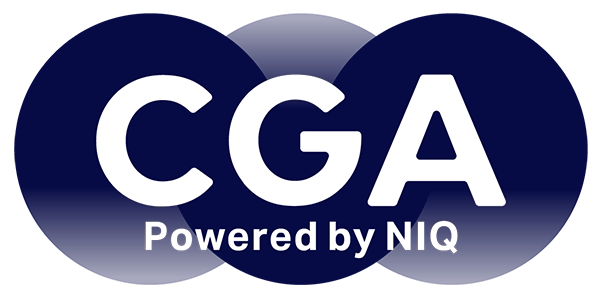1. Emerging brands are driving growth
Setting the scene for the conference, CGA’s Business Unit Director for Food and Retail Karl Chessell suggested media narratives about restaurant struggles could be overplayed, and that the managed sector was still a major success story. CGA figures show that small and medium-sized brands are now driving growth, especially at the premium end of the market: brands with fewer than 99 sites now account for 57% of the market, up by six percentage points in five years.
Managed growth has slowed lately though, with site numbers down 1.1% in the year to March, and sales figures have lagged behind the general market. But CGA data also shows that people continue to head out to restaurants and pubs in large numbers. “The frequency of eating and drinking out has remained solid in recent years… the demand is still there.”
2. Property owners are playing hardball

Despite high profile business failures, landlords in many places continue to press for high rents and upward-only reviews. But an investment panel session at the conference suggested that might have to change to reflect the new realities of the high street—and the low or no premiums currently on offer in some locations could be a sign of things to come.
Davis Coffer Lyons Director Trevor Watson added that property owners were increasingly attracted to competitive socialising concepts and street food operators as alternatives to restaurants. “Landowners are aware that food halls and street food offer an experience and variety that you can’t always get with restaurants… if your menu is limited to one food type you might not play well to millennials.”
3. Investors are still spending
Although recent failures have left investors wary of casual dining, there is still money to be had for the right operators. But Dave Sherrington, Regional Head of Sales at ThinCats—which has invested in brands including Abokado and Flat Iron—said the offer and team had to be spot on. “It’s about picking a great management team and a concept that is good quality, good value for money and with good EBITDA margins… we’re looking for consistency.”
Capdesia Analyst Mike Cheung meanwhile flagged up fast casual as the segment of the market to watch. “The consumer wants convenience, good quality and a better price point… We feel the market’s going to move towards these fast casual kind of offerings.”
4. IPOs can succeed
IPOs have been few and far between in the hospitality sector lately—but as Loungers plc’s Chief Executive Nick Collins told Future of Finance in a head to head interview with CGA vice president Peter Martin, they can still be a good option for growing businesses. “We’ve always thought that given the scale of the business and our track record that an IPO could be right for us.” It has also given more employees a stake in the business, he added. “At a time when recruitment and retention are such big issues, it gives our team a real boost.”
5. Be ready for a no-deal Brexit
With so many Brexit outcomes unknown and the next Prime Minister still to be confirmed, UKHospitality CEO Kate Nicholls suggested the only truly accurate political forecast is that there is more turbulence to come. She said the trade body had secured wins on big Brexit issues, including promises to maintain freedom of movement for staff already in the UK, and reassurances about contingencies for food supply from Europe.
But she also warned that crashing out the European Union was a real possibility. “If we have no deal it will have a significant impact… realistically we should be preparing for no deal on 31 October.” UKHospitality will go on fighting the sector’s corner on Brexit, she promised—as well as pushing hard on ongoing issues like rates reform, tax and regulation.

6. The Italian sector is under pressure
Of all the cuisine types spreading fast around the country, Italian has been at most risk of saturation, and Karl Chessell shared CGA data indicating the huge pressure that the middle market is now under—demonstrated by the recent collapse of Jamie’s Italian. “The Italian sector tends to score only middling for value for money and food quality… in consumers’ eyes there’s little differentiation between a lot of these brands.” It is still a hugely popular cuisine—43% of consumers have eaten at an Italian branded restaurant in the last six months—but more upheaval in this sector is likely.
7. Competition can be positive
The restaurant sector has become saturated in some parts of the country, but CGA’s Commercial Director Graeme Loudon pointed out that a heavy concentration of new openings can often benefit all operators. He pointed to the example of Altrincham, where the popularity of the food market has regenerated the eating out scene and brought in many more new brands and start-ups. “Not all competition is bad,” he said. “The market was always there—it just needed tapping… the question is how many other Altrinchams are out there?”
8. Operators need to get hyperlocal
With competition so fierce, it has never been more important to select the right locations for investment. That demands not simply an analysis of local footfall and demographics, but a hyperlocal understanding of consumers’ needs. This should influence pricing strategies, drinks ranging and much more besides new opening strategies—and CGA’s consumer segmentation tools can help. “It’s not just a case of build it and they will come,” said Graeme Loudon.
“Different parts of the market are ready for different concepts… it’s about understanding hyperlocal trends and what stage the market is at in places.”
9. Brands are pivoting
A panel of business leaders wrapped up the seminar with some upbeat messages—including the view that many operators are adjusting nimbly to consumers’ changing habits and mounting cost pressures. Sitting alongside leaders of Brasserie Bar Co and K10, which have moved from restaurants to the pub and grab and go sector respectively, Camm & Hooper’s managing director Debra Ward said: “As an industry, we’re getting better at pivoting when the proverbial hits the fan.” With more change coming down the line, it will be crucial for operators to continue flexing their offer, she said.
10. Sitting still is not an option
“I’m genuinely optimistic about the future,” said Brasserie Bar Co’s Executive Chairman Mark Derry on the leaders’ panel session. But he added: “Doing nothing is no longer plausible—if you’ve got issues you’ve got to confront them, and you’ve got to be prepared to change.” Maurice Abboudi, CEO of K10 and ‘Million Pound Menu’ investor, agreed:
“My biggest fear is complacency… it’s really important to keep on your toes and stay focused on the basics.”
Future of Finance highlighted opportunities for growth in what is currently deemed a challenging market. Investment decisions need to be made wisely and CGA’s location planning and consumer segmentation services combined with our expertise in market due diligence allow you to invest with confidence. To find out more contact karl.chessell@cga.co.uk
Future of Finance was supported by Caterer.com, Coffer Corporate Leisure, Fourth, Freeths, Odgers Berndtson, RSM and Zonal,



